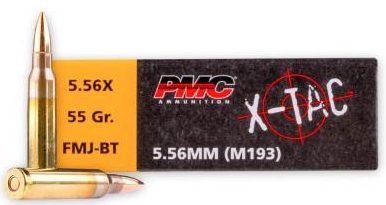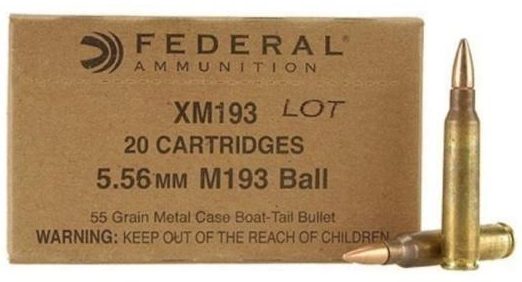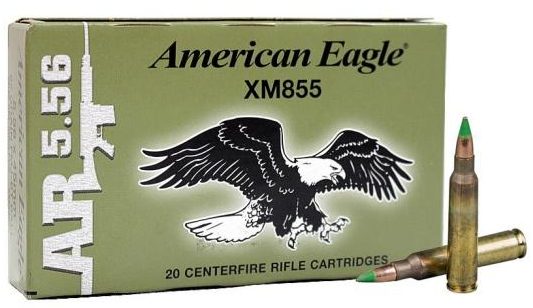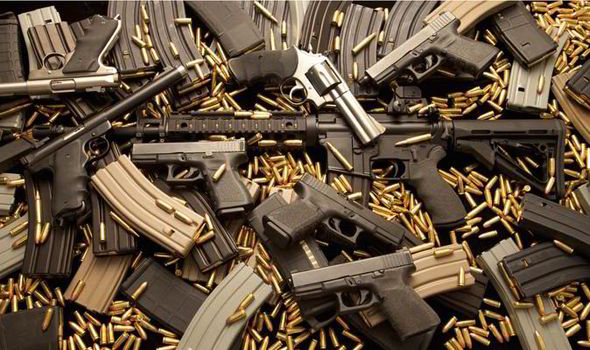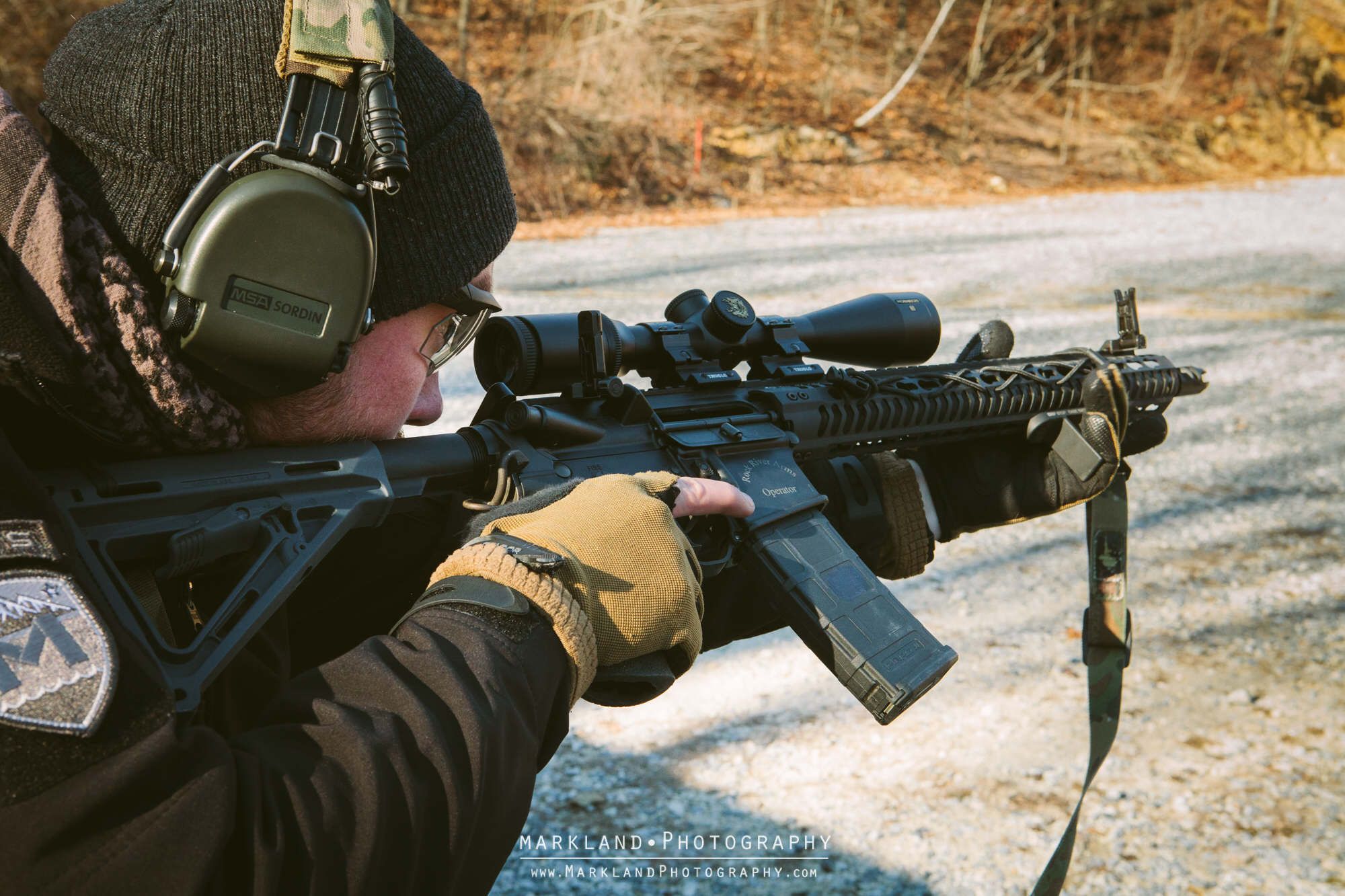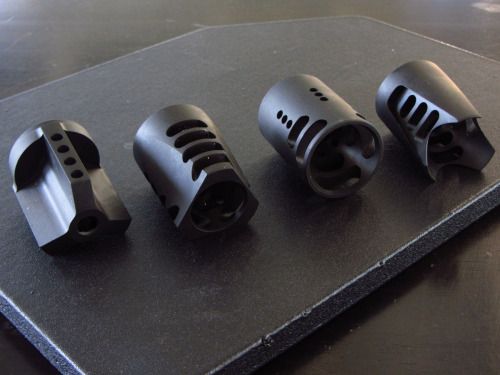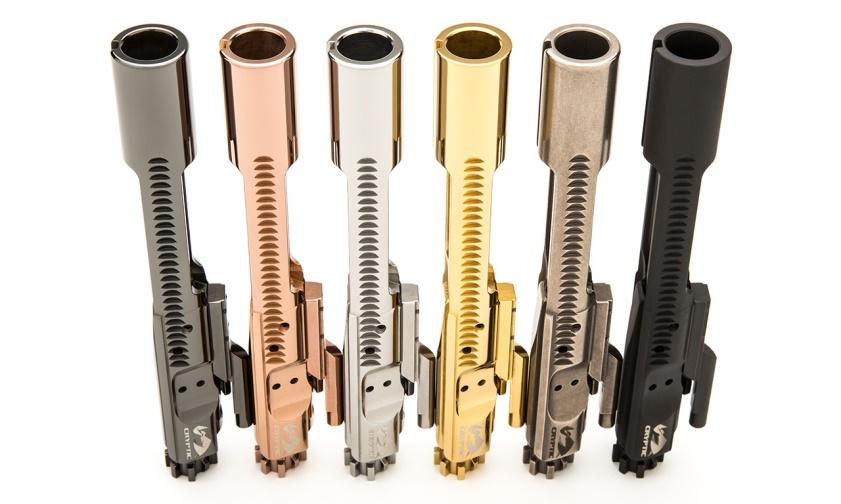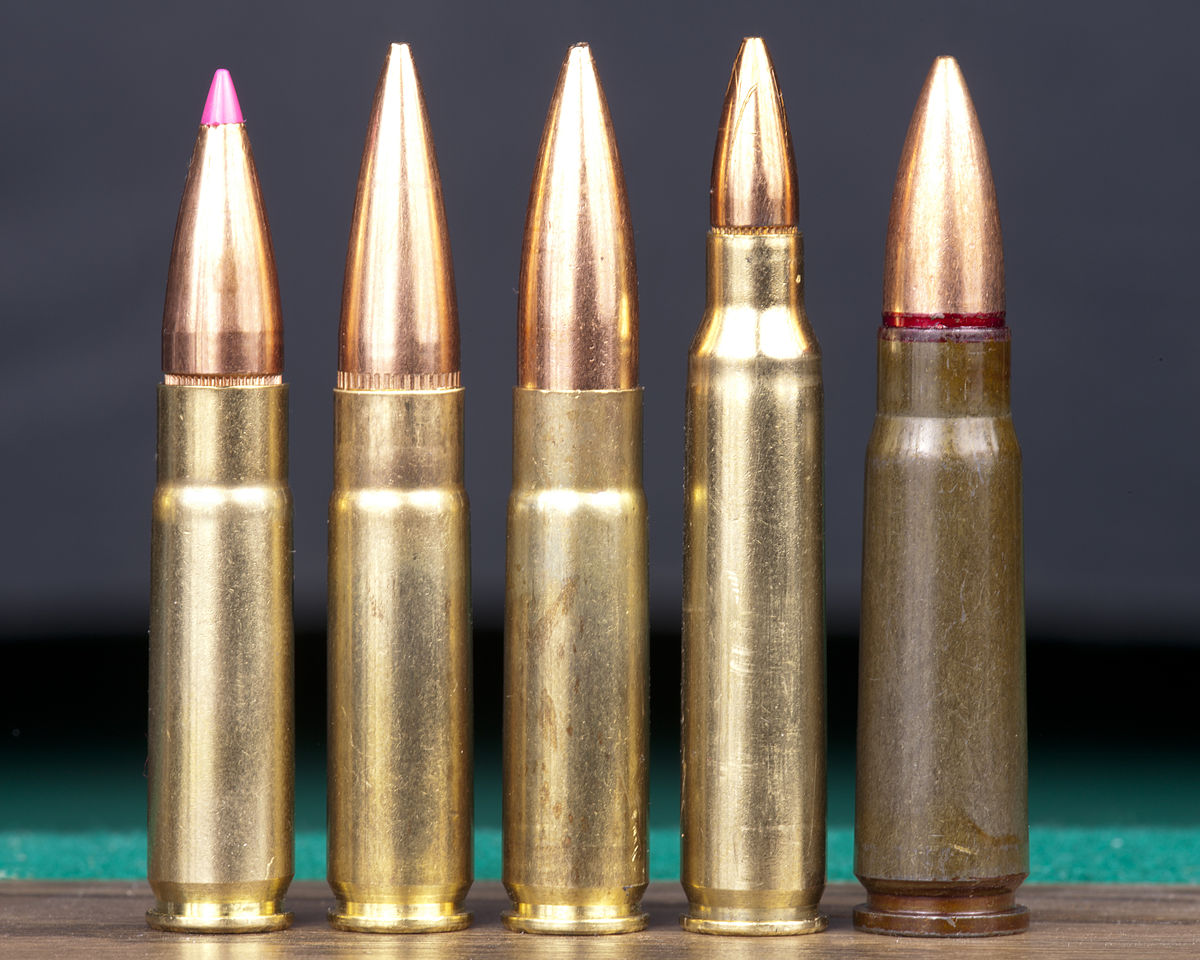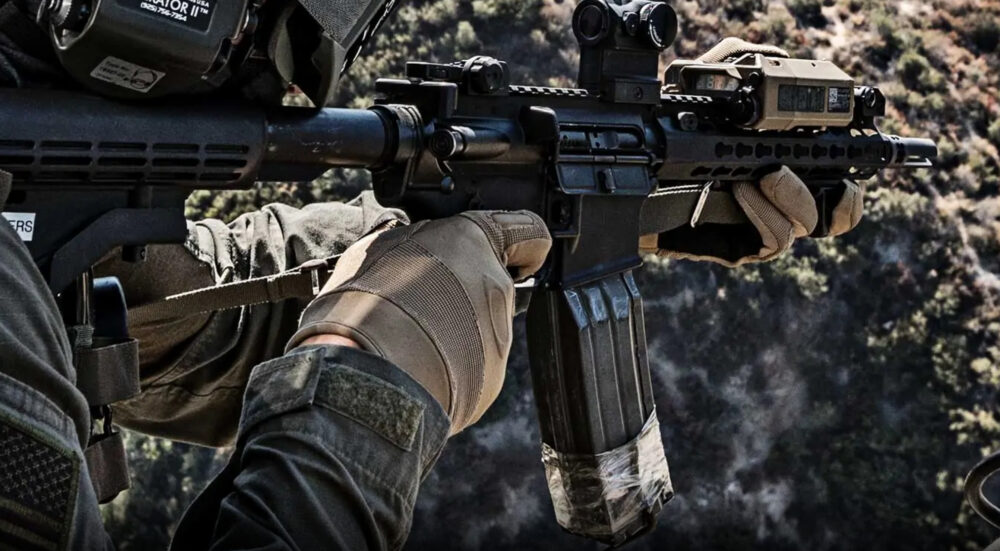When it comes to learning about ammo, there’s a lot of information to take in and digest.
For the casual firearms enthusiast who doesn’t make their own loads or spend extensive time researching ballistics, learning the intricate details about different types of ammo can get confusing and technical – especially when looking at different designations of 5.56 ammo.
If you have spent some time reading up on different types of 5.56 ammo, you may have noticed that Federal/American Eagle have two variants: M and XM cartridges.
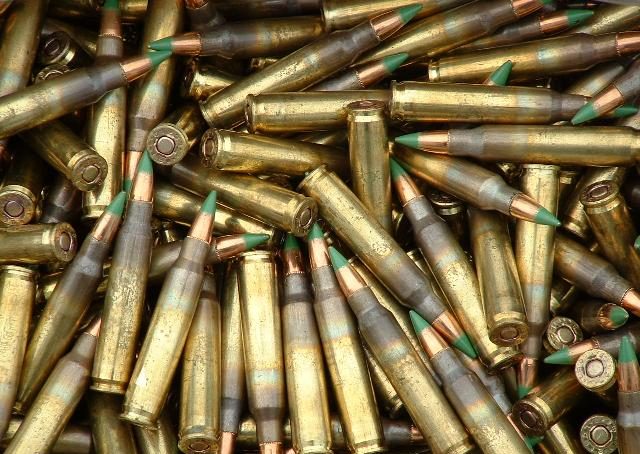
While similar in name, there are a lot of important differences between the two, which we will go over in this guide, as well as be looking at the differences between Federal’s XM193 and XM855 ammo.
Federal 5.56 M and XM Designations
The first thing to remember when distinguishing between M and XM ammo is that designation M is mil-spec.
This means that cartridges labeled as XM are based on the mil-spec design, but are commercially available and don’t need to meet all of the stringent guidelines to meet military protocol.
The standard 5.56 round used by the US Army was the M193 round until the mid-1980s when it was replaced with the M855.
The M193 rounds are a 55-grain ball cartridge which was used with the M16A1 rifle.
Like most military surplus equipment, there are strict rules around civilian ownership of M193 ammunition.
And what makes the distinction between M and XM cartridges even more confusing is that there’s ammo being sold in stores under the M193 name by companies like PMC.
While PMC’s M193 range of ammo is known for being good and reliable, it’s not mil-spec ammo.
Because most people can’t go out and buy a box of mil-spec M193 ammo, Federal/American Eagle came up with a commercial alternative – the XM cartridge.
Functionally similar to the M193, the XM193 is also a 55-grain cartridge designed for the civilian market. With that said, since it’s not mil-spec ammo, it doesn’t have to go through all of the strict regulations as its military-grade counterpart.
It’s important to note that just because XM193 cartridges don’t meet the guidelines for national defense, it doesn’t mean they’re an inferior cartridge. It just means that they’re designed to meet the unique specifications for commercial ammunition instead.
Overall, the XM193 is a great product for civilian purposes. Its specs include:
- Copper alloy no. 260 casing.
- 55-grain FMJ boat-tail bullet.
- Muzzle velocity of 3165 fps.
- Primer operating range between -40 to 125 degrees Fahrenheit.
You might also come across different product numbers when purchasing XM193 cartons, like XM193F or XM193C. Each of these has the exact same ammunition, but different packaging configurations.
What’s the Difference between the M193 and M855 Ammo?
Another important distinction to make when talking about mil-spec ammo is the difference between M193 and M855 ammo.
These days, the most common round used by the US Army is the M855. While similar to the M193, this cartridge was created out of a need to neutralize targets hiding behind light barriers.
The M855 is a ball cartridge that’s optimized for long-range shooting. Heavier than the 55-grain M193, the M855 weighted in at 62 grains and was better suited for threats protected by objects behind like glass, thin metals, and padded, heaving clothing.
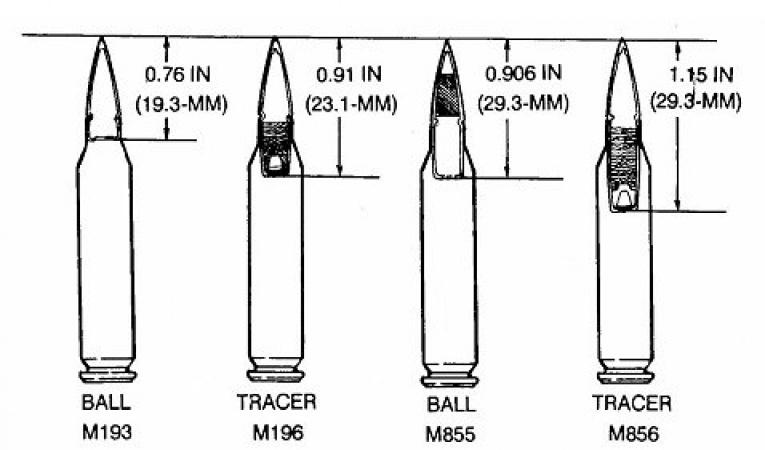
You may also see the classification SS109 lumped into the same category as the M855. Initially meant to describe the projectile fired from the cartridge, many non-US manufactures have started referring to the entire cartridge as the SS109 – creating even more confusion.
The M855 was adopted because of its penetrating properties. The bullet’s steel core tip, known as the “penetrator” didn’t expand on impact like the M193 and other cartridges that used a lead core. And while this was great for shooting through light barriers, it actually reduced the damage inflicted on living targets when compared to its predecessor, the M193. But remember, the focus is primarily on penetration, which is why M855 cartridges were determined to be advantageous in combat.
The XM855 and the XM193
Same with the XM193, Federal released a commercial-grade version of the M855 that provided most of the advantages with the mil-spec round, without the comprehensive military requirements.
Because of the lack of expansion mentioned earlier, XM855 ammo is best suited for barrels with a 1:7 or 1:8 twist rate. Those who are shooting with the common 1:9 barrel twist are actually advised to use the XM193 instead.
Compared side-by-side with the PMC Bronze .223, a 55-grain cartridge functionally similar to the XM193, the XM855 outperformed. During a test where both rounds were shot as a ¾” steel plate, the PMC Bronze .223 penetrated .20 inches and the XM855 penetrated .35 inches. The video of both cartridges being tested can be viewed here, with the impact analysis taking place at the 2:50 mark.
The penetration advantage that the XM855 has over the XM193 isn’t dramatic, but still enough to make a difference in a scenario when military personnel is firing at threats hiding behind cover. For this reason, some target ranges have actually banned the use of XM855 ammo for two reasons: the risk of overpenetration and because the bullet can create a spark when penetrating the steel target, creating a potential fire hazard.
XM855 Ammo and the ATF
In 2015, XM855 cartridges were almost banned by the ATF due to being marketed as so-called armor-piercing bullets.
The administration at the time sought to reclassify ammo like the XM855 and other steel core cartridges as armor-piercing in fear that they could be used to cause serious damage to citizens and law enforcement officers.
Interestingly enough, during the same time as the government was looking to restrict steel-core ammunition, they also expressed interest in limiting the production of lead-based ammo because of environmental impacts.
Fortunately, after short-lived hysteria, the ATF appears to have dropped any interest they had in banning or further restricting XM855 cartridges.
The Bottom Line on M and XM Variants
Choosing between the XM193 and the XM855 depends on a few factors, such as:
- What you plan on shooting: If shooting at soft targets, XM193 rounds will cause more damage if you’re shooting at targets less than 100 yards away.
- Your barrel twist: If your barrel’s twist rate is 1:7 or 1:8, stick to the XM855. If it’s 1:9, the XM193 is better.
- Where you’re shooting: As we mentioned before, not all ranges allow XM855 cartridges, which is something to consider before purchasing your next box of ammo.
The general consensus is that mil-spec ammo outperforms its commercial counterparts for the sole reason that there are stricter regulations for ammo to meet military specification. However, Federal and American Eagle’s XM cartridges are known for their accuracy and dependability in the commercial market, essentially making them the next best thing.


